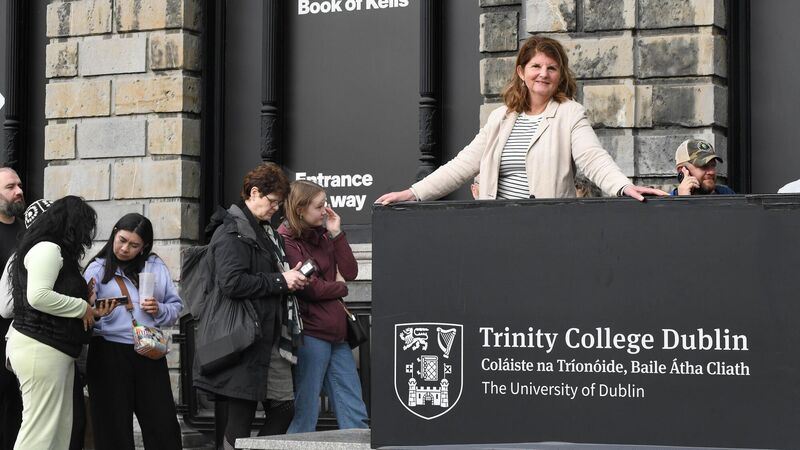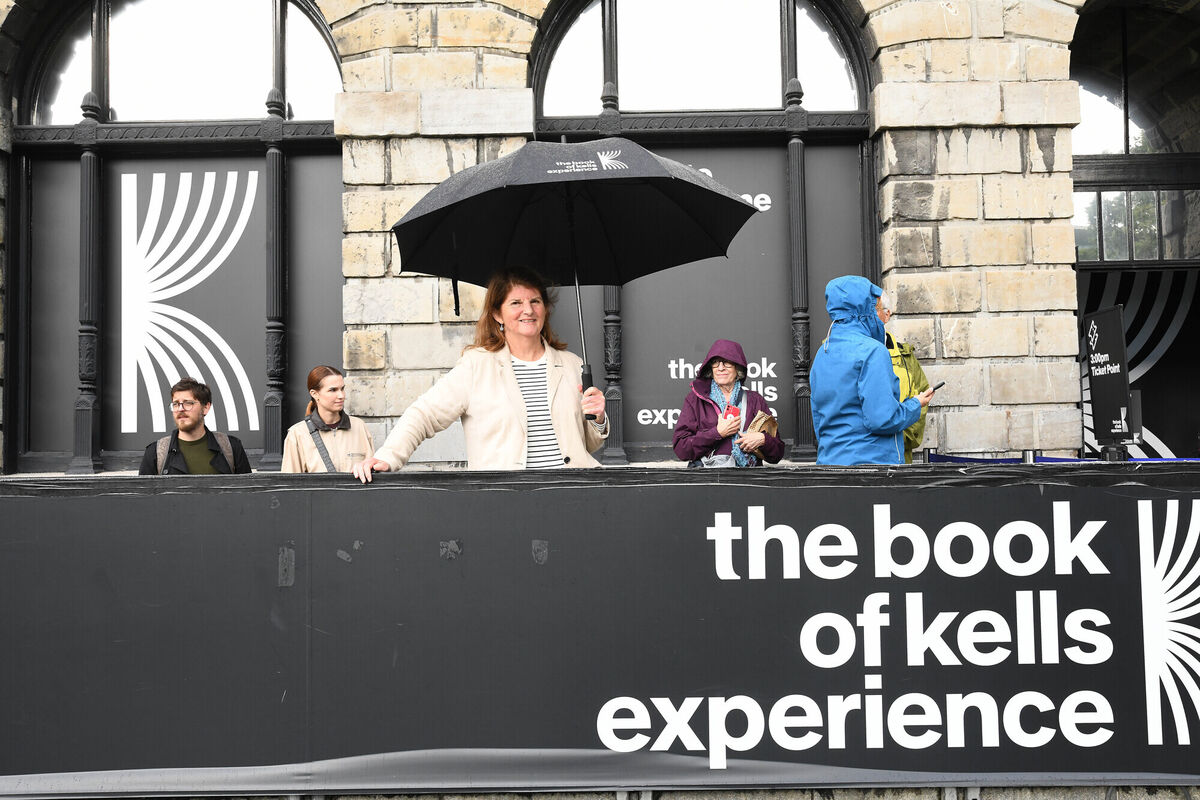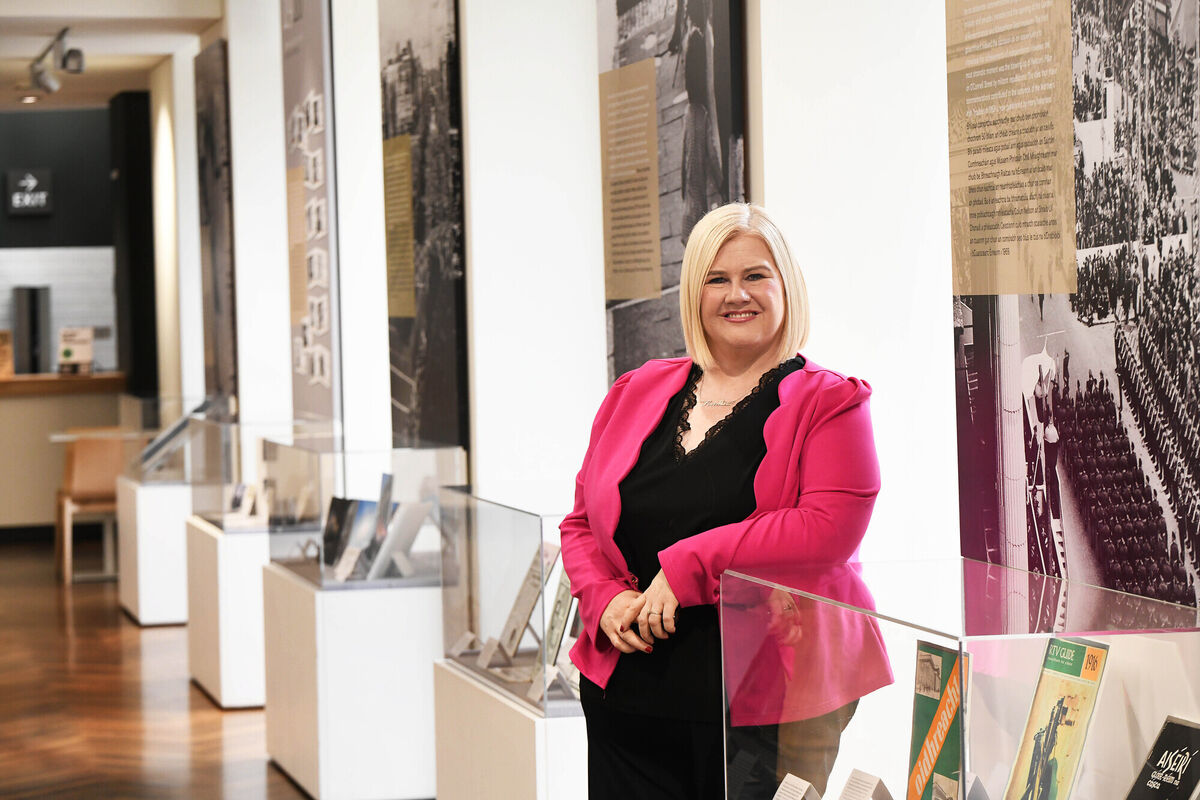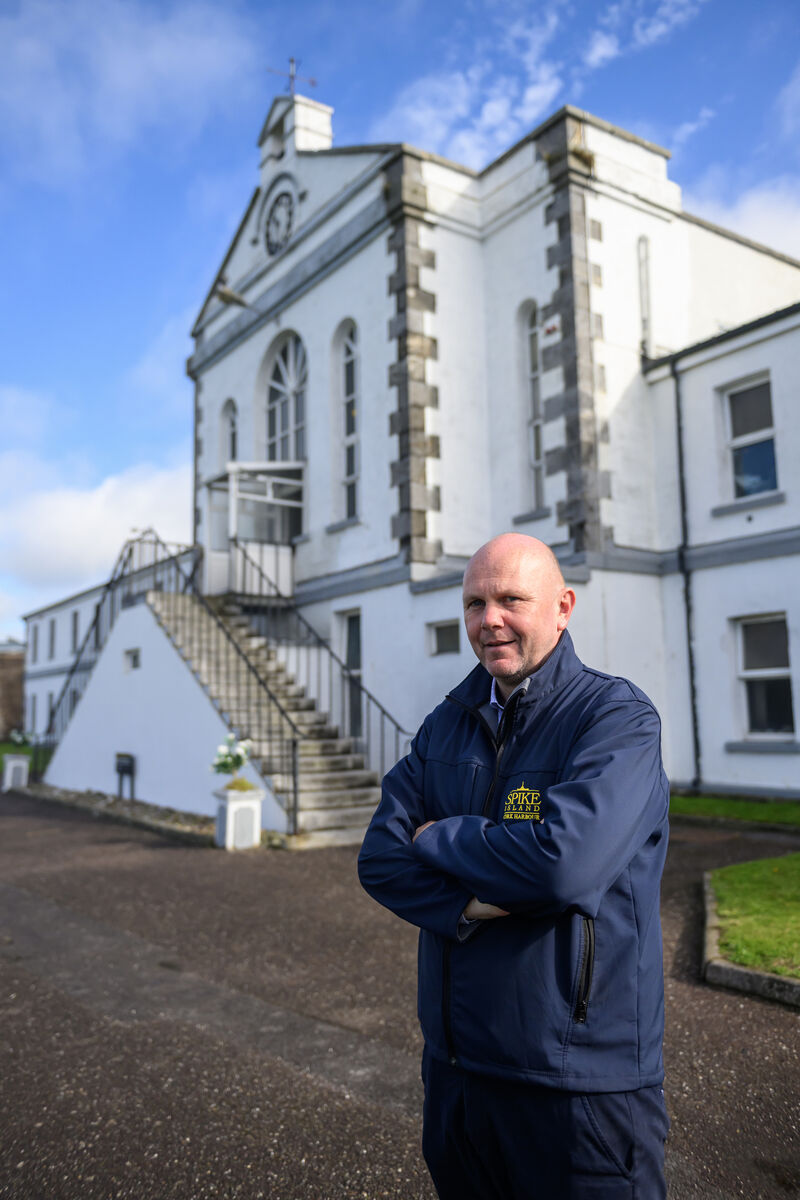Ireland's museums: Meet the people bringing Irish history to life

Anne-Marie Diffley, visitor services manager at the Old Library Trinity College Dublin. where the Book of Kells is on display. Photograph Moya Nolan
As Irish people, we are known to be a nation of storytellers.
And while modern technologies have allowed museums and tourist attractions to offer contactless experiences through self-guided audio tours and interactive videos, it is the human connection we have to our past that turns a visit to a museum from a passive activity into a living, breathing journey through the past.
Multilingual accessibility, immersive soundscapes, digital reconstructions, and interactive exhibits have made museums more inclusive and globally relevant. They allow people with disabilities, language barriers, or limited time to still access meaningful information.
But history was — and still is — about people. The heart of these experiences doesn’t lie in scripts or screens, but in the voice of tour guides throughout our nation.
In a country where storytelling is part of our DNA, it’s human connection that turns a visit to a museum from a passive activity into a living, breathing journey through the past.
Here are some of the people telling the stories of our past.

Anne-Marie Diffley has worked at Trinity College for the past 33 years. In her role as visitor services manager, she has witnessed the Trinity tours evolve and transform into one of Dublin’s most popular guided experiences, attracting visitors from the United States, Brazil, Korea, and across Ireland.
Over three decades, she has welcomed world leaders, Oscar-winning actors, and famous rock stars to the experience — though she insists that “all visitors are VIPs”.
The Trinity College Book of Kells Experience unfolds in three parts.
It begins with a walking tour guided by college students or graduates, followed by access to the Old Library and the Long Room, and ends with the Red Pavilion Digital Exhibition.
The Old Library is renowned for housing the Book of Kells, but when I visited, it wasn’t the ancient manuscript that impressed me most, it was Ava, my tour guide.
Her natural storytelling ability and engaging interaction with the group made the experience truly memorable.
“We don’t give them scripts,” Diffley explains. Instead, she encourages each guide to let their individual interests and passion for different aspects of Trinity’s history shine through.
Each guide’s personal touch makes every tour unique. With over seven centuries of history tied to its grounds, it would be impossible to share every fact and anecdote the university has to offer.
As Ava highlighted the historical and architectural significance of each stop, she effortlessly wove together myths, humorous tales, and pop culture references. (Is it even possible to finish a Trinity tour without at least one mention of Sally Rooney’s Normal People?)
“The technology behind the audio tour and digital exhibition was designed to enhance the visitor experience, not replace tour guides,” Diffley suggests.
By offering multiple ways to engage with the content, the team have made the Book of Kells Experience accessible and enjoyable for everyone.

Modern Irish history is a complex tale — one interwoven with revolutions, risings, controversial figures, betrayals, and tragedy.
The GPO’s Rebel Rising tour connects the intricacy of the events that shaped Ireland’s journey from Home Rule to independence, with a particular focus on the 1916 Rising.
Ann-Marie Smith took charge as general manager of the GPO Museum last year. Her fascination with Irish history began in primary school during a class trip to Kilmainham Gaol.
She later earned a master’s degree in Historical Geography, focusing on the use of guerrilla warfare in Tipperary during the War of Independence.
Initially planning to pursue a career in teaching, Smith accepted what she thought would be a seasonal job as a tour guide at Kilmainham Gaol — a role she ended up holding for four years.
Since then, she has worked in a variety of positions across some of Dublin’s most renowned museums, including the GAA Museum and Glasnevin Cemetery Museum.
When the position of General Manager at the GPO Museum became available, she jumped at the chance.
With her vast experience in the sector and her deep passion for Irish history, Smith emphasises the importance of adding emotional depth to the museum’s tours.
The GPO Museum currently employs eight tour guides, along with administrative staff.
Ideally, applicants for a tour guide position hold at least a degree in history and have experience in customer service or visitor engagement.
Above all, Smith believes that, “to work in this field, you must be confident in your knowledge and understanding of the subject in order to communicate it effectively to a crowd.”
All of these qualities were embodied by Séan, who led the Rebel Rising tour I attended.
One particularly underrated trait he displayed was his approachability — he welcomed questions with enthusiasm, not only from those on the tour but even from passers-by.
It served as a reminder that we cannot fully grasp the complexity of Ireland’s revolutionary era through sound, video, or static text alone.
“A lot of museums give their guides a script,” Smith explains, “but we encourage ours to add their own personal spin — that’s what makes every tour different. We want their personalities to shine through. The tour you take today will be completely different from the one you take tomorrow.”
Creating an inclusive and engaging space for all visitors is paramount for the team.
Recognising that not everyone can join a guided tour, the museum also offers self-guided experiences with audiobooks available in six languages.
In addition, staff members are stationed on the floor to answer questions, provide context, and connect the dots for visitors.
Next year marks 110 years since the events of 1916 and a decade since the opening of the GPO Experience. Smith is looking forward to an exciting year ahead.
While she remained tight-lipped about the details, she assures me, “it’s not to be missed.”

Nestled in one of the deepest harbours in the world, Spike Island — or simply “Spike,” as it’s known in Cork — was once home to some of Ireland’s most notorious prisoners.
Today, it is home to one of Ireland’s most unique visitor centres. The island covers 103 acres of land and is dominated by Fort Mitchel, which primarily served as a prison.
As the name Spike Island implies, you must take a ferry from nearby Cobh to uncover its magic.
Alan O’Callaghan, Spike Island’s general manager, underlined the importance of technology as an aid to learning, but noted that it cannot solely sustain a successful visitor attraction.
“We have designed an augmented reality app that can help bring the history of the fortress to life in ways we cannot, but it was designed to complement the traditional way of promoting our history. You can never replace the personal element that tours like these provide.”
Spike Island has over 1,500 years of history, brought to life by a team of tour guides and office staff. Tours vary depending on the season, tide, and visitor numbers.
During busy summer days, up to nine guided tours might run; in quieter months, that drops to two.
“We provide each tour guide with a handbook when they join and ask them to use it as a reference, giving everyone the licence to direct their tour in a way that feels natural to them.
We ask that 7–8 minutes of each tour be scripted and kept light on facts and figures, with the rest being anecdotal and full of stories.”
O’Callaghan and the team welcome people of all ages to the island. From educational tours for primary and secondary school children across Munster to corporate days out and family trips, each tour is tailored to its visitors.
“This flexibility allows guides to adapt based on group interest. Some groups may be more interested in the War of Independence, so we will focus on that time period — it’s very much up to the group and what they’re interested in.”
As a tourist attraction, Spike Island offers experiences that go beyond the traditional list of things to do. It caters to history enthusiasts, fitness fans, and thrill seekers alike.
Earlier this summer, Spike hosted the Red Bull Drift Series, and twice a year it holds a 5km run — not as easy as it sounds (anyone who has walked the steep hill will vouch for this).
The team is currently hosting “After Dark Tours,” featuring mentalist Dean Jacob.










